Selected References:
- Artama M, et al. 2006. Antiepileptic drug use and birth rate in patients with epilepsy-a population-based cohort study in Finland. Hum Reprod 21:2290-5.
- Bech LF, et al. 2018. In utero exposure to antiepileptic drugs is associated with learning disabilities among offspring. J Neurol Neurosurg Psychiatry 89:1324–1331.
- Birnbaum AK, et al. 2020. Antiepileptic drug exposure in infants of breastfeeding mothers with epilepsy. JAMA Neurol 77(4):441-450.
- Blotière PO, et al. 2019. Risks of 23 specific malformations associated with prenatal exposure to 10 antiepileptic drugs. Neurology 93(2):e167-e80.
- Blotière PO, et al. 2020. Risk of early neurodevelopmental outcomes associated with prenatal exposure to the antiepileptic drugs most commonly used during pregnancy: a French nationwide population-based cohort study. BMJ Open 10(6):e034829.
- Bruno MK, Harden CL. 2002. Epilepsy in pregnant women. Curr Treat Options Neurol 4(1):31-40.
- Bülau P, et al. 1988. Pharmacokinetics of oxcarbazepine and 10-hydroxy-carbazepine in the newborn child of an oxcarbazepine-treated mother. Eur J Clin Pharmacol 34:311–3.
- Chen CY, et al. 2017. In utero oxcarbazepine exposure and neonatal abstinence syndrome: Case report and brief review of the literature. Pharmacotherapy 37:e71–e5.
- Christensen J, et al. 2015. Apgar-score in children prenatally exposed to antiepileptic drugs: a population-based cohort study. BMJ Open 5(9):e007425.
- Cohen JM, et al. 2019. Anticonvulsant mood stabilizer and lithium use and risk of adverse pregnancy outcomes. J Clin Psychiatry 2019;80(4).
- Daugaard CA, et al. 2020. Association of prenatal exposure to valproate and other antiepileptic drugs with intellectual disability and delayed childhood milestones. JAMA Netw Open 3(11):e2025570.
- Eisenschenk S. 2006. Treatment with oxcarbazepine during pregnancy. Neurologist 12(5):249-254.
- Friis ML, et al. 1993. Therapeutic experiences with 947 epileptic out-patients in oxcarbazepine treatment. Acta Neurol Scand 87(3):224-227.
- Gentile S. 2003. Oxcarbazepine in pregnancy and lactation. Clin Drug Investig 23:687.
- Guo Y, et al. 2021. A comparative study of the effects of valproate and oxcarbazepine on sexual function, sperm quality, and sex hormones in males with epilepsy. Biomed Res Int 2021:6624101.
- Hvas CL, et al. 2000. Epilepsy and pregnancy: effect of antiepileptic drugs and lifestyle on birthweight. Br J Obstet Gynaecol 107:896-902.
- Isojarvi JI, et al. 2004. Effect of epilepsy and antiepileptic drugs on male reproductive health. Neurology 62:247-53.
- Jacobsen PE, et al. 2014. Prenatal exposure to antiepileptic drugs and dental agenesis. PLoS One 9(1):e84420.
- Kaaja E, et al. 2003. Major malformations in offspring of women with epilepsy. Neurology 60:575-9.
- Lloyd P, et al. 1994. Clinical Pharmacology and Pharmacokinetics of Oxcarbazepine. Epilepsia 35(s3).
- Luef G, et al. 2009. Oxcarbazepine treatment in male epilepsy patients improves pre-existing sexual dysfunction. Neurologica 119(2):94-99.
- Lutz UC, et al. 2007. Oxcarbazepine treatment during breast-feeding: a case report. J Clin Psychopharmacol 27:730–2.
- Meischenguiser R, et al. 2003. Major malformations in offspring of women with epilepsy. [Letter] Neurology 61:1631.
- Meischenguiser R, et. al. 2004. Oxcarbazepine in pregnancy: clinical experience in Argentina. Epilepsy Behav 5:163-167.
- Miller M, et al. 2003. Major malformations in offspring of women with epilepsy. [Letter] Neurology 61:1631.
- Mølgaard-Nielsen D, Hviid A. 2011. Newer-generation antiepileptic drugs and the risk of major birth defects. JAMA 305(19):1996-2002.
- Montouris G. 2005. Safety of the newer antiepileptic drug oxcarbazepine during pregnancy. Curr Med Res Opin 21:693-701.
- 2020. Trileptal® Prescribing Information. Available at URL: https://www.novartis.us/sites/www.novartis.us/files/trileptal.pdf.
- Rolnitsky A, et al. 2013. In utero oxcarbazepine and a withdrawal syndrome, anomalies, and hyponatremia. Pediatr Neurol 2013;48(6):466-8.
- Supernus Pharmaceuticals. 2018. Otexllar XR® Prescribing Information. Available at URL: https://www.oxtellarxrhcp.com/assets/OxtellarXRPrescribingInformation.pdf.
- Tomson T, et al. 2015. Antiepileptic drugs and intrauterine death: A prospective observational study from EURAP. Neurology 85: 580-588.
- Tomson T, et al. 2018. Comparative risk of major congenital malformations with eight different antiepileptic drugs: a prospective cohort study of the EURAP registry. Lancet Neurol 17(6):530-538.
- Veiby G, et al. 2014. Fetal growth restriction and birth defects with newer and older antiepileptic drugs during pregnancy. J Neurol 261:579-588.
- Videman M, et al. 2016. Evidence for spared attention to faces in 7-month-old infants after prenatal exposure to antiepileptic drugs. Epilepsy Behav 64(Pt A):62-68.
- Weston J, et al. 2016. Monotherapy treatment of epilepsy in pregnancy: congenital malformation outcomes in the child. Cochrane Database Syst Rev 11(11):CD010224.
- Wu D, et al. 2018. The effects of oxcarbazepine, levetiracetam, and lamotrigine on semen quality, sexual function, and sex hormones in male adults with epilepsy. Epilepsia 59(7):1344-1350.

